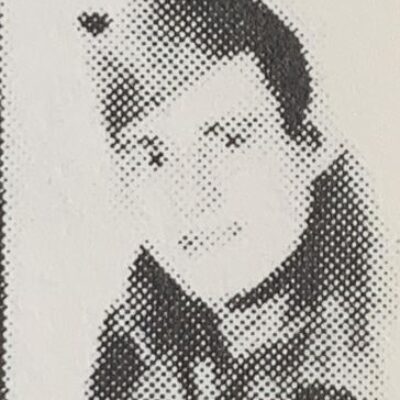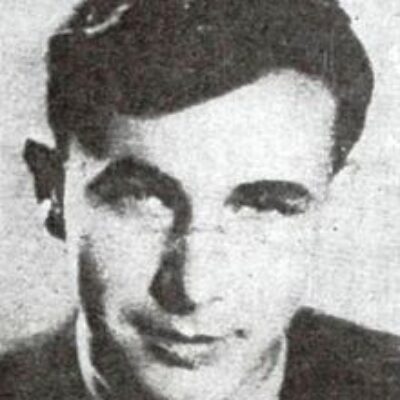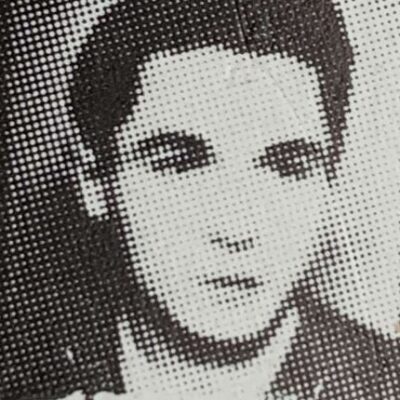Enver S. ČUČAK
ENVER ČUČAK, son of SINAN, born on March 18, 1921, in Mostar, a carpenter, a member of the League of […]
Mostar Battalion was formed as the “Konjički” in September 1941. Until the formation of the 13th Herzegovina Brigade in May 1944, 827 fighters passed through the Battalion, and 445 of them perished, including 211 from Mostar. Of the 86 women, 43 were killed. Mostar residents also fought in many other units of the NOVJ (People’s Liberation Army of Yugoslavia) and among the ranks of the activists of the National Liberation War in Mostar and other cities in Bosnia and Herzegovina… According to the records of the organization SUBNOR Mostar, every third citizen was an activist of the National Liberation War, 670 fighters were killed, 1517 were victims of fascist terror, and 206 were civilian war victims. Džemil Šarac, article “Sa Mostarcima” (“With the People from Mostar”), Hercegovina No. 9, p. 221.
“And we were all young. Those of us who were 17, 18 years old, some seemed old even though they were not older than 25. The ones over 30 were rare. There were girls and boys with different characteristics and temperaments, robust and calm, talkative and silent, recklessly brave and rational, ordinary and above-average, semi-literate and university-educated, workers and highly skilled craftsmen, high school students and university students, skilled singers and those who couldn’t carry a tune, jokers and serious-minded individuals. From all our nations and religions: Muslims, Croats, Serbs, Jews, Orthodox Christians, Catholics, Muslims, Jews, atheists, and semi-atheists. Some were from straight from Mostar and others from the surrounding locations, from Konjic and outside Konjic.” (Hercegovina Magazine No. 7, p. 238)
Groups of new fighters arrived from Mostar every 10-15 days, and the Unit quickly grew into a solid military force. The guides for the groups from Mostar were Mehmed Arap, Vasa Maslo, Serif Burić, Husa Orman, Vojo Ivanišević, and Pero Krajina, who were among the bravest and most resourceful fighters. The groups regularly brought not only weapons but also medical supplies, sugar for the hospital, writing materials, large quantities of paper, books taken from the National Library (which formed the library at Borci), and other supplies for the needs of the Unit. (Source: https://www.cidom.org/wp-content/uploads/2017/11/Hercegovina-u-NOB-1.pdf)
After the war, a street in Mostar was named after the Mostar Battalion.

ENVER ČUČAK, son of SINAN, born on March 18, 1921, in Mostar, a carpenter, a member of the League of […]

SALIH SALKO ČUKUR, son of SALIH, born on January 20, 1922, in Mostar. Tailor. Member of the League of Communist […]

MEHMED OMER ĆEMALOVIĆ, son of AHMET, born on November 17, 1919, in Mostar, a locksmith, member of the League of […]

MUSTAFA MUJO ĆEMALOVIĆ ĆIMBA, son of AHMET, born on December 31, 1919, in Mostar, a tailor. He grew up in […]

REMZIJA ĆIŠIĆ, son of SALIH, born on May 15, 1925, in Mostar, former student of the Craft School in Mostar, […]

NAZIF ĆIŠIĆ, son of MUSTAFA, born on August 4, 1921, in Mostar, student at the Technical School, Geodetic Department in […]

MITHAD ĆIŠIĆ, son of HUSEIN HUSAGA, born on December 16, 1924, in Mostar. Gymnasium student, member of the League of […]

IBRAHIM IBRO ĆIŠIĆ, son of SALIH SALKO, born on June 17, 1920, in Mostar, former student of the Islamic Gymnasium […]

IBRAHIM IBRO ĆIŠIĆ, son of MUSTAFA, born on February 8, 1923, in Mostar, student at the Gymnasium in Mostar, member […]

HUSREF ĆIŠIĆ, son of HUSEIN HUSAGA, born on September 5, 1909, in Mostar. Lawyer. Member of the Communist Youth League […]